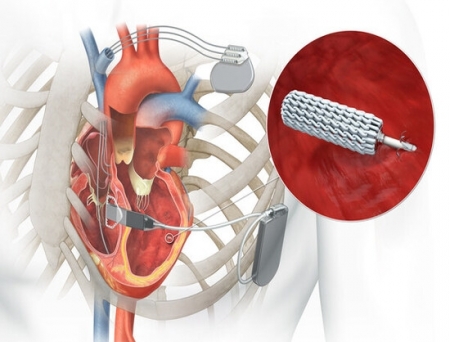EBR Systems Secures FDA Approval for WiSE System to Treat Advanced Heart Failure

EBR Systems, Inc. has received FDA approval for the WiSE® System, which marks a significant leap forward in the treatment of heart failure.
Unlike conventional CRT, the WiSE System is the first and only to deliver leadless left ventricular endocardial pacing (LVEP), that closely aligns with the heart's natural conduction pathway. The endocardial approach represents a more physiological method of resynchronisation and allows electrophysiologists to treat patients that are not able to receive lead-based devices. This advancement offers a pioneering treatment option for patients who have limited access to conventional CRT therapies.
"Recent years have brought significant advancements in leadless pacing for the right heart, but CRT patients were limited to traditional options—until now," said principal investigator Niraj Varma, MD, PhD, FRCP, Professor of Medicine at Cleveland Clinic.
"Now, the WiSE System brings a leadless solution to left ventricular pacing, eliminating the biggest limitation of conventional CRT: the lead. This is a game-changer for patients who were previously untreatable due to anatomy or lead failures," added Varma.
According to the company, Conventional Cardiac Resynchronisation Therapy (CRT) often leaves many heart failure patients without viable treatment options. The WiSE System was specifically designed to address the needs of these underserved patient populations. It offers a solution for patients with challenging anatomy that prevents successful implantation of the left ventricular (LV) lead, as well as those who have experienced acute or chronic LV lead failure.
Additionally, the system is ideal for patients who face high procedural risks associated with LV lead placement. It also provides a much-needed option for patients with leadless pacemakers who require CRT but are typically not suitable candidates for conventional CRT upgrades.
The WiSE System has demonstrated promising results, showing a 16.4 percent reduction in left ventricular end-systolic volume (LVESV)—a key marker of reverse remodeling (p=0.003). Additionally, patients experienced an average QRS duration shortening of 39ms, indicating significant electrical resynchronisation. Clinically, the impact has been substantial, with over 55 percent of patients improving by at least one NYHA class, while another 40 percent maintained their current condition, underscoring the WiSE System's potential to transform outcomes for this high-need population.
"We're delighted for the heart failure patients who were not treatable with existing CRT lead-based devices. This milestone celebrates the dedication of our team, and the support of our shareholders, and empowers electrophysiologists with a vital new tool to help their patients. It marks the culmination of EBR's 22-year pre-commercial phase and the start of our journey as a high-growth, medical device company," said John McCutcheon, President and CEO of EBR Systems.
The WiSE System syncs with existing pacing devices—pacemakers, ICDs, or CRTs—using a subcutaneous ultrasound Transmitter to power an ultra-compact Electrode implanted in the LV. No leads. No lead navigation. Just endocardial pacing that's more physiologic, from the inside out.
EBR Systems FDA approval Heart Failure Heart Failure Treatment Left ventricular endocardial pacing Niraj Varma WiSE System
Last news about this category
We use our own and third party cookies to produce statistical information and show you personalized advertising by analyzing your browsing, according to our COOKIES POLICY. If you continue visiting our Site, you accept its use.
More information: Privacy Policy














